60-Pack Yellow Sticky Traps for Fungus Gnats and Fruit Flies
$14.99
Tired of tiny fliers around your plants? Our 60PCS Yellow Sticky Traps for Fungus Gnats and Fruit Flies use bright yellow cards with strong, dual-sided adhesive and included stakes to catch adult gnats, whiteflies, aphids, and thrips fast, right at plant height. Set them near the soil for gnats or at the canopy for whiteflies to cut down egg-laying while you let the top inch of soil dry. It is a simple, non-spray step that gives you quick relief and clear feedback on what is working.
Description
If tiny fliers are turning your plants into a headache, the 60-Pack Yellow Sticky Traps for Fungus Gnats and Fruit Flies: give you a simple, non-toxic way to cut down adult pests fast while you get the root cause under control. University IPM programs explain that yellow cards attract flying adults like fungus gnats, whiteflies, aphids and thrips, which stick on contact so they can’t keep laying eggs around your plants.
I like these for homes and greenhouses because they work without sprays, relying on the insects’ strong attraction to the yellow color and a non-toxic adhesive, and they can meaningfully reduce adult numbers as part of an integrated plan.
Key Customer Benefits
- Cuts adult populations quickly so plants recover sooner. Yellow sticky traps for fungus gnats and whiteflies attract flying adults and stop them from laying more eggs. University guidance notes that cards placed at plant height collect fungus gnats, whiteflies, aphids and thrips, which helps reduce pressure while you fix the source in the soil.
- Non toxic and family friendly option for homes and greenhouses. These traps rely on color attraction and a pressure-sensitive adhesive instead of broadcast sprays. Research and extension sources confirm that yellow cards exploit insects’ strong visual response to yellow, so you get capture without foggers or aerosols around kids and pets.
- Breaks the breeding cycle when paired with better watering. Catching adults with sticky cards, then letting the top inch of potting mix dry, tackles both stages that matter. Extension experts recommend this two-part approach since adults are caught on cards while larvae decline in drier media.
- Fast visual feedback that guides your next move. Cards double as monitors. A quick glance tells you if the population is rising or falling, which plants need extra attention, and when to scale treatments up or down. Greenhouse IPM programs even specify weekly card changes and simple placement rules, which you can copy at home.
- Simple, tool-free setup indoors or in covered spaces. The dual-sided design and included stakes make it easy to place cards right at canopy level where adults fly. That position is what universities recommend for best catch rates.
- Fits an integrated plan, not just a quick fix. Use cards alongside soil-focused steps such as BTi drenches or repotting if media is heavily infested. That combined strategy is what extension pages recommend for stubborn gnat issues.
- Thoughtful safety guidance for real homes. Inside the house, cards are effective and unlikely to snag beneficials. Outdoors they can catch non target insects, so keep them for indoor plants, greenhouses or screened patios. If a pet bird ever gets loose in a room, remove cards first. These are small but important best practices drawn from horticulture and community experience.
Product Description
What this sticky trap is
These 60PCS Yellow Sticky Traps for Gnats, Fruit Flies, Whiteflies, Thrips and Aphids are bright yellow, dual-sided sticky cards sized for indoor plants, greenhouses and patios. Each card slips into a small stake so you can place it right at plant height. Extension programs describe yellow cards as a core IPM tool for flying plant pests because adults are strongly attracted to yellow and get caught on contact. You get fast adult knockdown without broadcast sprays, which buys time to fix the source in the soil.
How it works on pests
Fungus gnat adults hover at the soil line and lay eggs in moist media. Whiteflies flutter up when you touch the plant. Thrips and winged aphids move along the canopy searching for tender growth. By parking yellow cards at or just above the foliage and near the pot rim, you intercept these adults before they lay more eggs.
University guides recommend yellow cards for fungus gnats, whiteflies, shore flies, leafminers and thrips, with placement at canopy level and near media where gnats emerge. Cards also double as monitors. If you see fewer new captures week over week, your plan is working.
Why yellow sticky traps are effective and different
The color is not cosmetic. Visual studies and grower guidance report that bright yellow elicits strong orientation in many sap-feeding pests, which is why yellow is the standard in greenhouses. Cards give immediate reduction in adult numbers and a clean read on population trends, without the residue or room fogging that comes with aerosols. Research on whiteflies even shows yellow sticky traps can contribute meaningful suppression in protected environments, which mirrors the practical results most houseplant owners want. For thrips-heavy crops, some programs add blue cards, yet yellow remains the widest net for mixed pests.
Dual-sided adhesive doubles the capture area, which is useful when cards sit in dense foliage. The included stakes let you position traps at soil level for fungus gnats or raise them into the canopy for whiteflies and aphids. Extension sheets note that keeping cards at canopy height and moving them up as plants grow improves catch rates. With sixty cards, you can outfit a shelf of houseplants and still replace cards on a weekly or as-needed schedule.
Product Specifications
| Attribute | Details |
|---|---|
| Pack count | 60 traps per set is a common retail configuration for houseplant use. Example 60-count listings confirm indoor use targeting fungus gnats and fruit flies. |
| Card size | Two standard formats dominate: 6 x 8 inches rectangles, and smaller cards around 5.2 x 3.2 inches. Either size works; larger cards present more capture area in dense foliage. |
| Color and sides | Bright yellow, dual-sided adhesive. Yellow is used because many sap-feeding pests orient strongly to this color. |
| Included hardware | Most “with stakes” kits ship with plastic holders or stands and twist ties so you can place traps at soil or canopy height. Example listings specify trap stands or plastic holders included. |
| Material | Typically paper or PVC substrate with pressure-sensitive adhesive. PVC cards are marketed as thicker and more durable. |
| Adhesive durability | Many cards are advertised as water-resistant and UV-resistant so the glue does not dry quickly in bright or humid conditions. Useful in greenhouses and bright windows. |
| Target pests | Flying adults of fungus gnats, whiteflies, winged aphids, thrips, shore flies and leafminers. This is consistent across university IPM sheets. |
| Recommended placement | At or just above the plant canopy, and for gnats also near the pot rim. Replace or move upward as plants grow. |
| Monitoring density | Greenhouse guidance suggests 3 to 4 cards per 1,000 square feet or at least one card per 1,000 square feet as a starting grid, then adjust for hotspots. For shelves at home, think one card per cluster of plants, then add more where captures spike. |
| Change-out frequency | Check weekly and change weekly in active infestations or when surfaces fill with insects or dust. |
| Safety profile | Cards are pesticide-free and the glue is generally non-toxic, which is why they are favored indoors. Still, keep away from pets, birds and beneficial insects. If a non-target animal contacts a card, vegetable or mineral oil can loosen the adhesive, followed by gentle washing. |
| Use scope | Indoor plants, greenhouses, grow tents and screened patios. Outdoors in open gardens, cards can catch non-targets, so use thoughtfully. |
| Extra monitoring tip | Some IPM programs publish action thresholds using weekly counts per card to decide next steps. As a reference point for thrips, Rutgers cites about 15 thrips per yellow card per week per 1,000 square feet as a starting guideline, then tailor to your crop and tolerance. |
How to Use and Install Yellow Sticky Traps for Houseplants and Greenhouses
Before you start, confirm the pest
Look for tiny flies hovering around pot rims or windows. That usually signals fungus gnats, whose larvae live in moist potting mix. University pest notes explain that adults are the “mosquito-like” fliers you see, while the root-zone larvae can stunt seedlings and tender roots when populations build. Your first goal is to catch egg-laying adults fast, then dry the top of the soil so larvae decline. Yellow sticky traps excel at the first task and they also help you monitor progress week by week.
Unpack and prepare the traps
Peel the film from one side and mount the card on the included stake or holder. Place the stake so the adhesive faces the flight path of the target pest. Greenhouse IPM pages describe cards as dual-sided yellow for broad attraction and note that cards serve as both control and monitoring tools. Write the date on the card edge so you can track weekly changes.
Placement
For fungus gnats: Set traps low, right at the pot rim or even flat and horizontal just above the medium, which captures more weak-flying adults as they emerge. Trials and extension notes report up to roughly fifty percent more gnats on horizontal cards near the medium compared with traditional vertical cards at canopy height. Add a few traps under benches if floors are damp.
For whiteflies, winged aphids and thrips: Raise traps to canopy height and slide them upward as plants grow. Yellow is a good generalist color, while several programs recommend blue if thrips are your only issue.
How many traps to start with
Commercial IPM guidance suggests one to four cards per 1,000 square feet as a baseline grid, with extra cards near doors, vents and hotspots. For a shelf of houseplants, a practical translation is one card per cluster of plants, then add more where you see the most captures. Replace or move cards weekly to follow the problem as it shifts.
Plan a weekly card change in active infestations, sooner if a card fills with insects or dust. When you swap cards, glance at counts and locations. Fewer new adults week over week means your soil moisture changes are working. Tag the new card with the date so you can compare trends later, a small habit many IPM teams recommend.
Sticky traps stop today’s egg-layers. The long-term win comes from drier topsoil and, if needed, a BTI drench for larvae.
Water differently: Let the top one to two inches of potting mix dry before you water again. Bottom-water in a saucer so the surface stays drier, which deprives larvae of their favorite zone. Multiple UC and extension notes call drying the surface the key step for fungus gnat control in homes.
Use BTI when pressure stays high: University guides recommend Bacillus thuringiensis israelensis as a soil drench to kill larvae in the medium. Apply according to the product label and repeat as directed. Brands vary, so follow the exact dilution on your pack.
Where traps do and do not belong
Use these traps indoors, in greenhouses or screened patios. In open gardens, sticky surfaces can snag helpful or non-target insects. Keep traps out of reach of pets and away from areas where a loose pet bird could contact them. If birds frequent a room or greenhouse, install traps low in foliage or behind mesh guards, and take them down if a bird escapes into the space. Wildlife organizations and universities warn that sticky surfaces are indiscriminate, which is why careful placement matters.
What happens if a non-target animal touches a trap
If an accident happens, the most reliable guidance is contact a licensed wildlife rehabilitator right away. Many humane resources advise using a small amount of food-safe oil to loosen adhesive and then a gentle wash, but stress that professional care is best for the animal’s safety. Keep this as a last resort and seek expert help first.
Common Issues
- Catching very few gnats at soil level: Move one trap flat and horizontal near the medium for three days and reassess, since this position often boosts gnat captures.
- Catching whiteflies but thrips keep streaking leaves: Add a blue card in the same zone or raise yellow cards a touch higher in the canopy.
- Cards load up fast but gnats persist: You are removing adults, yet larvae may still be hatching. Increase dry intervals between waterings and start a BTI drench cycle per label until counts drop.
Safe disposal and clean up
When a card is full or dusty, fold the sticky sides together, press firmly, and place it in household trash. Wash hands with soap and warm water after handling. If adhesive gets on skin, vegetable oil on a paper towel loosens residue before washing. Humane groups and rehabbers reference oil as a standard adhesive release, but again, keep traps placed so accidents never happen.
With traps placed at soil or canopy height, weekly changes, and surface drying between waterings, you should see fewer new adults each week and calmer plants. That curve is exactly why universities teach sticky cards as a simple core tool in an indoor IPM plan, not a gimmick.
Frequently Asked Questions
Do yellow sticky traps get rid of fungus gnats completely?
They knock down the flying adults quickly, which slows egg-laying, but they do not kill larvae in the soil. Extensions recommend pairing traps with drier topsoil and, if needed, a Bacillus thuringiensis israelensis drench for larvae.
Where should I place traps for best catch rates?
For fungus gnats, put traps low at the pot rim or even flat and horizontal just above the soil. For whiteflies, aphids and thrips, set traps at canopy height and move them up as plants grow.
How many traps do I need in a home or small greenhouse?
Commercial guidelines suggest one to four cards per 1,000 square feet as a baseline grid, then add more where captures spike. At home, start with one card per plant cluster and adjust by what you catch.
How often should I change cards?
Weekly during active infestations or sooner if a card is dusty or covered. Extensions use weekly checks and replacements because fresh adhesive keeps counts reliable.
Are these safe around pets and kids?
The cards are pesticide-free and rely on adhesive, which is why universities recommend them for indoor monitoring and control. Keep them out of reach. If adhesive contacts skin, a little vegetable or mineral oil helps release it before washing.
What about pet birds or visiting wild birds?
Indoors, sticky cards can snag a loose bird by accident. Bird owners on forums advise removing cards first if a bird is flying in the room, and to use oil only as a last resort while you contact a wildlife rehabilitator.
Will sticky cards attract beneficial insects?
In protected spaces like homes and greenhouses, the risk is lower, but in outdoor settings cards can catch non-target insects including predators. Use cards indoors, in greenhouses, or screened areas, and place thoughtfully.
Do I need blue traps for thrips or is yellow enough?
Yellow is the best generalist color for mixed pests. Some IPM programs add blue cards if thrips are the only target and you want extra sensitivity. Position just above the canopy either way.
Are homemade traps with petroleum jelly on yellow paper worth it?
DIY versions appear in community threads, but extensions emphasize purpose-made sticky cards because they have the right color, surface, and long-lasting adhesive. If you try DIY, monitor carefully and replace often.
Do vinegar bowls work better than sticky traps?
Vinegar bowls can drown some adults, but extension articles and grower experience still lean on yellow sticky cards for consistent monitoring and adult knockdown while soil fixes handle larvae. Many gardeners combine both.
I am catching lots of adults but still seeing gnats. What now?
You are likely removing fliers while larvae keep maturing. Let the top one to two inches of soil dry between waterings and add a BTI drench per label until weekly trap counts fall. Repot with clean media if pots are heavily infested.
Can I cut cards into smaller pieces or lay them flat?
Yes. UC notes you can cut cards and mount them on skewers for pots. Studies also report higher fungus gnat catches when cards are horizontal near the soil surface.
Where else should I put traps in a greenhouse?
Add cards near doors, intake vents, and under benches to locate breeding areas and track population trends over time.
Are sticky cards enough for seedlings and young plants?
They help a lot, but seedlings are sensitive to root feeding by larvae. Extensions recommend combining traps with moisture management and BTI to protect young roots.
Conclusion
Sticky cards are not a gimmick. They are a proven IPM tool that gives you fast adult knockdown and clear feedback while you fix the root cause in the pot. University guides show that yellow cards catch fungus gnats, whiteflies, winged aphids, thrips, and more when placed at the right height and checked weekly, which is exactly what this 60-pack is designed to make easy.
If you are seeing tiny fliers today, do two things now. Slide a few yellow cards to plant height, low near the rim for gnats or at the canopy for whiteflies, then start letting the top inch of soil dry between waterings. That combination is the simple, research backed path that breaks the breeding cycle. If pressure stays high, add a BTI drench to target larvae in the media. Keep swapping cards weekly so you can watch the curve drop.
For growers who like numbers, commercial programs even suggest using weekly card counts to guide next steps, with example thresholds for thrips used as a starting point that you can adjust to your space and crop. You do not need to be that formal at home, but the idea behind it is solid. Your cards are both treatment and a dashboard.
Related products
-
Sale!
EcoVenger Bed Bug Control Kit: 1 Gal Spray and 48 Glue Trap Interceptors
$89.94Original price was: $89.94.$83.50Current price is: $83.50. Buy Now -
Sale!
Extra Strength Bed Bug and Mite Spray 24 oz and Laundry Additive 32 oz Bundle
$60.25Original price was: $60.25.$58.99Current price is: $58.99. Buy Now -
ZappBug Room Bed Bug Heater for Beds and Couches: Large-Capacity DIY Heat Chamber
$1,695.00 Buy Now -
Bonide 573 Bedbug Killer RTU, 1 Quart
$14.69 Buy Now
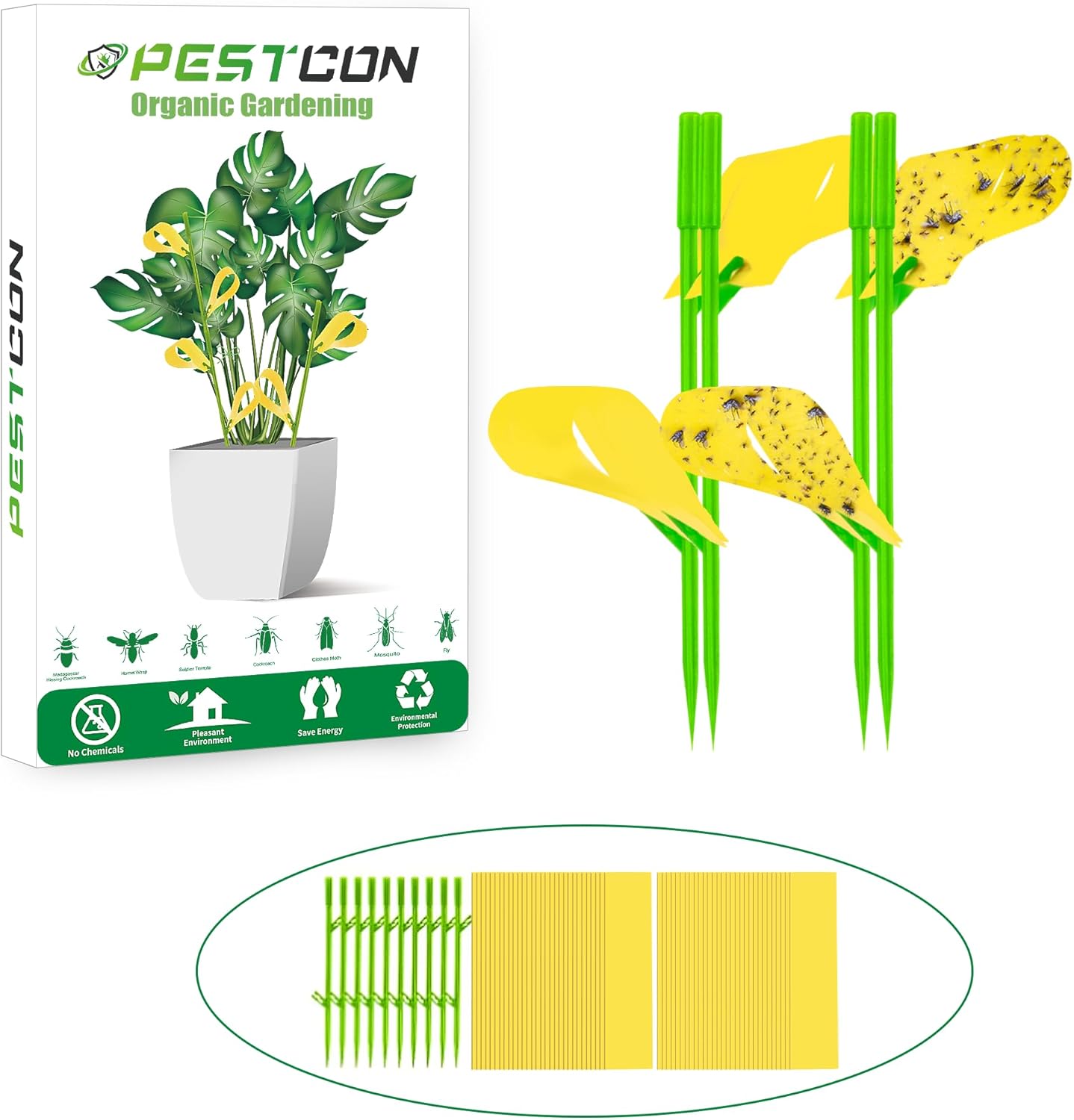
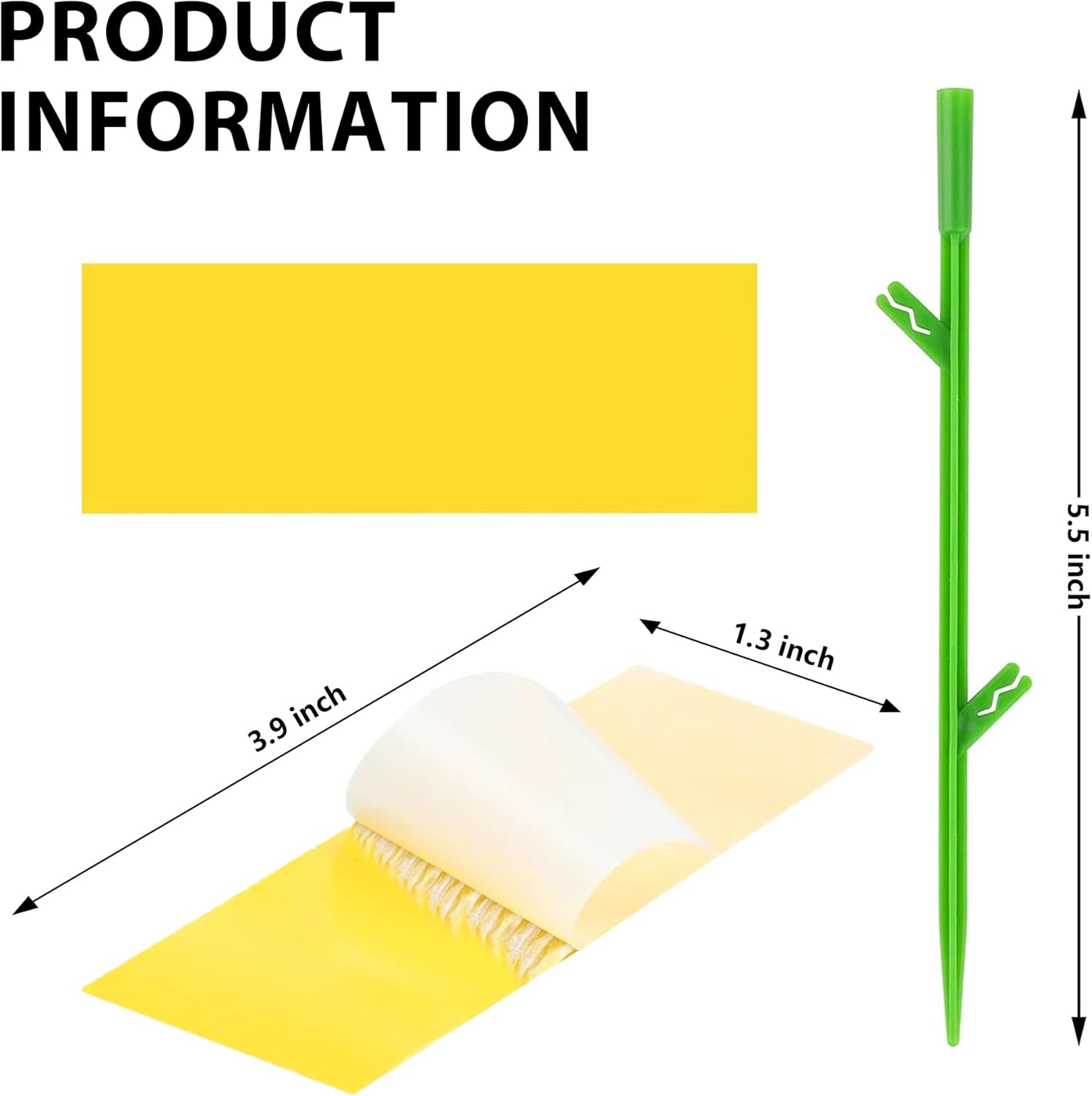
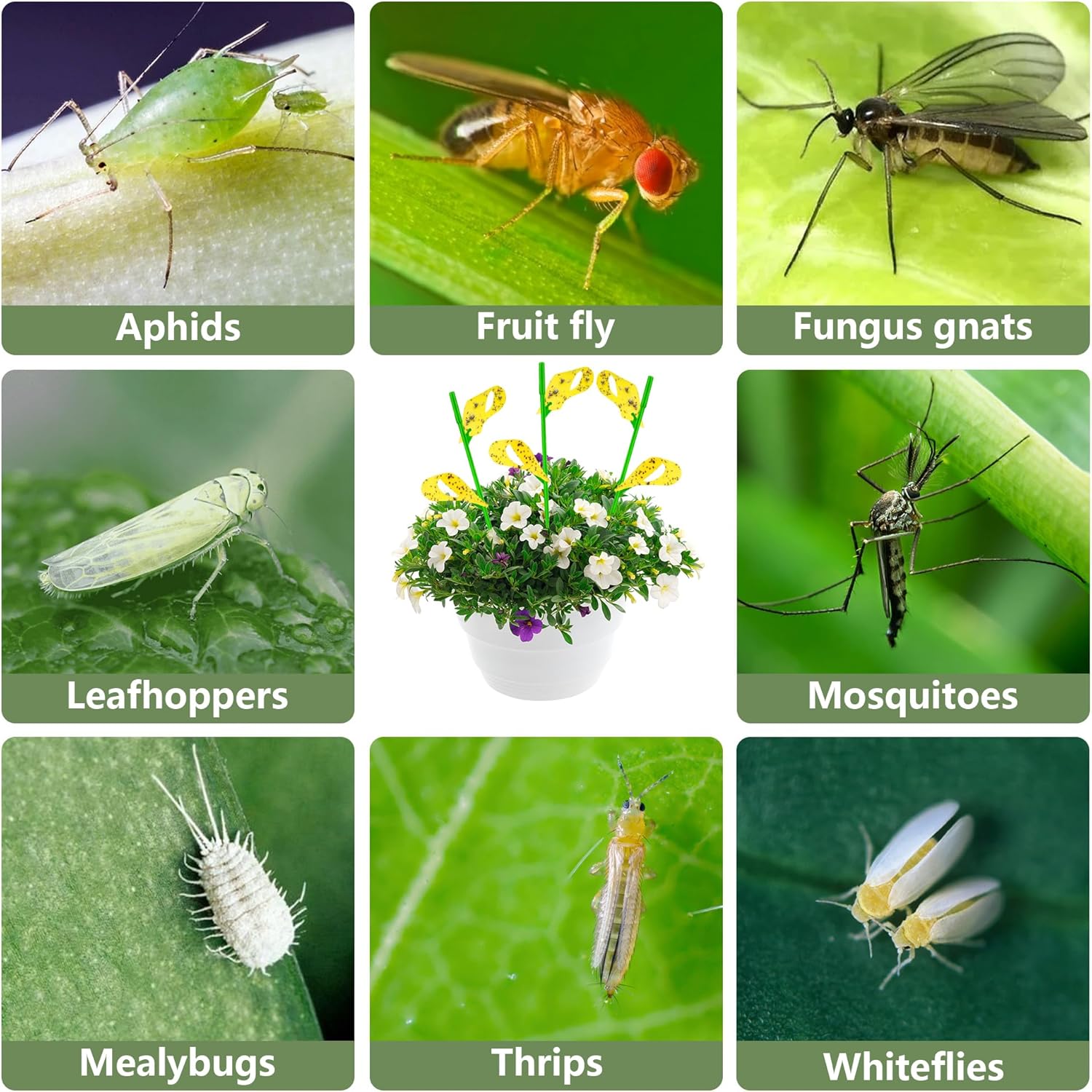

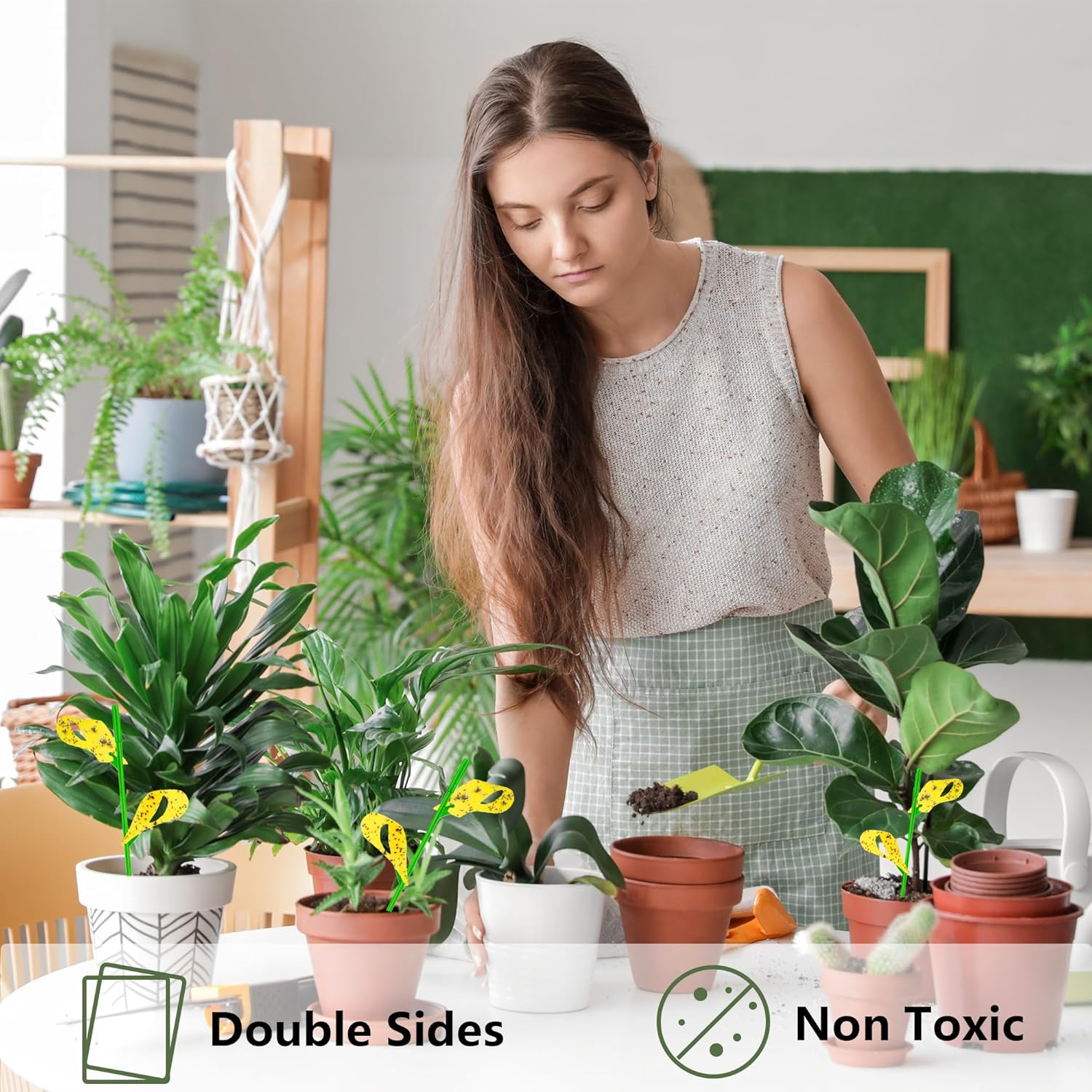
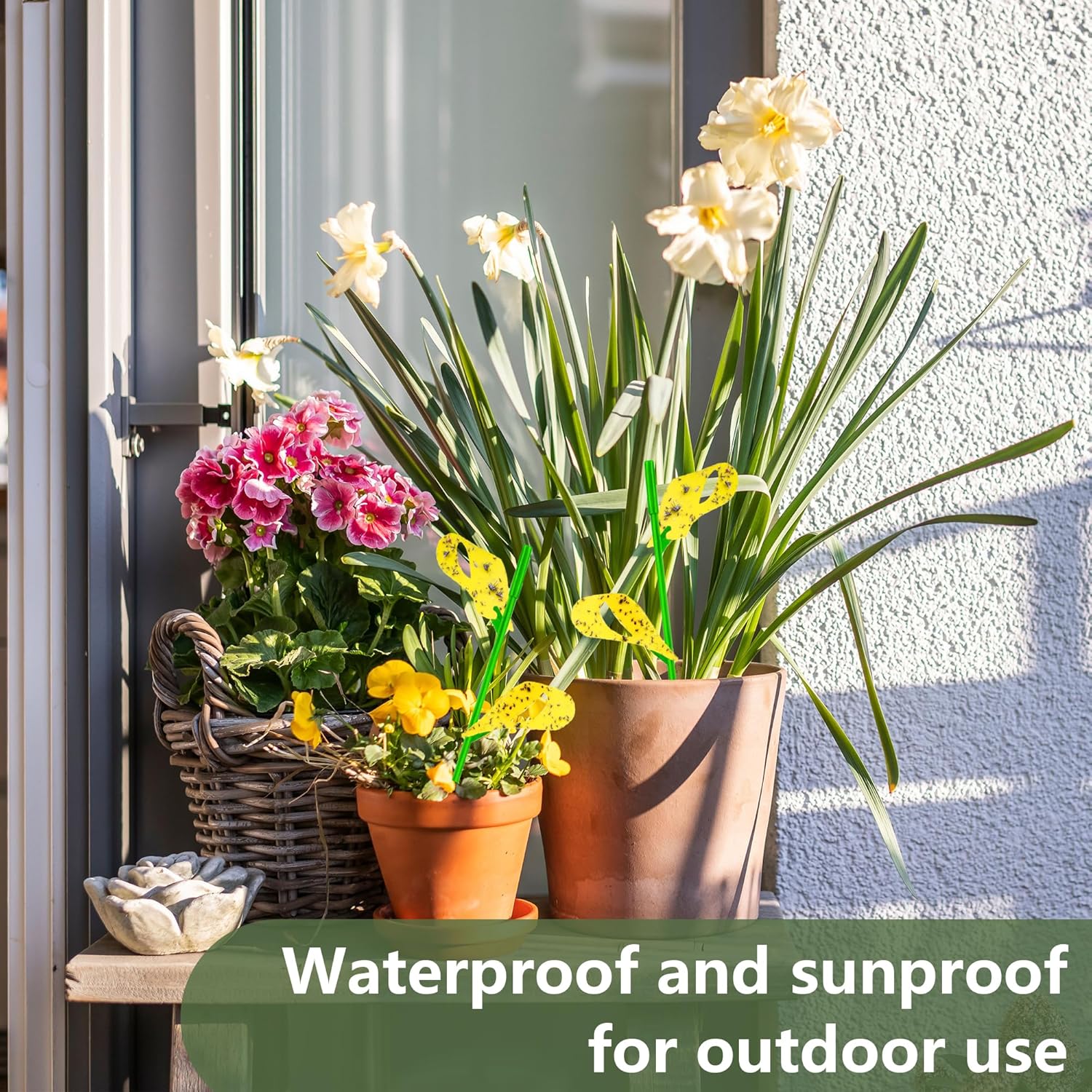
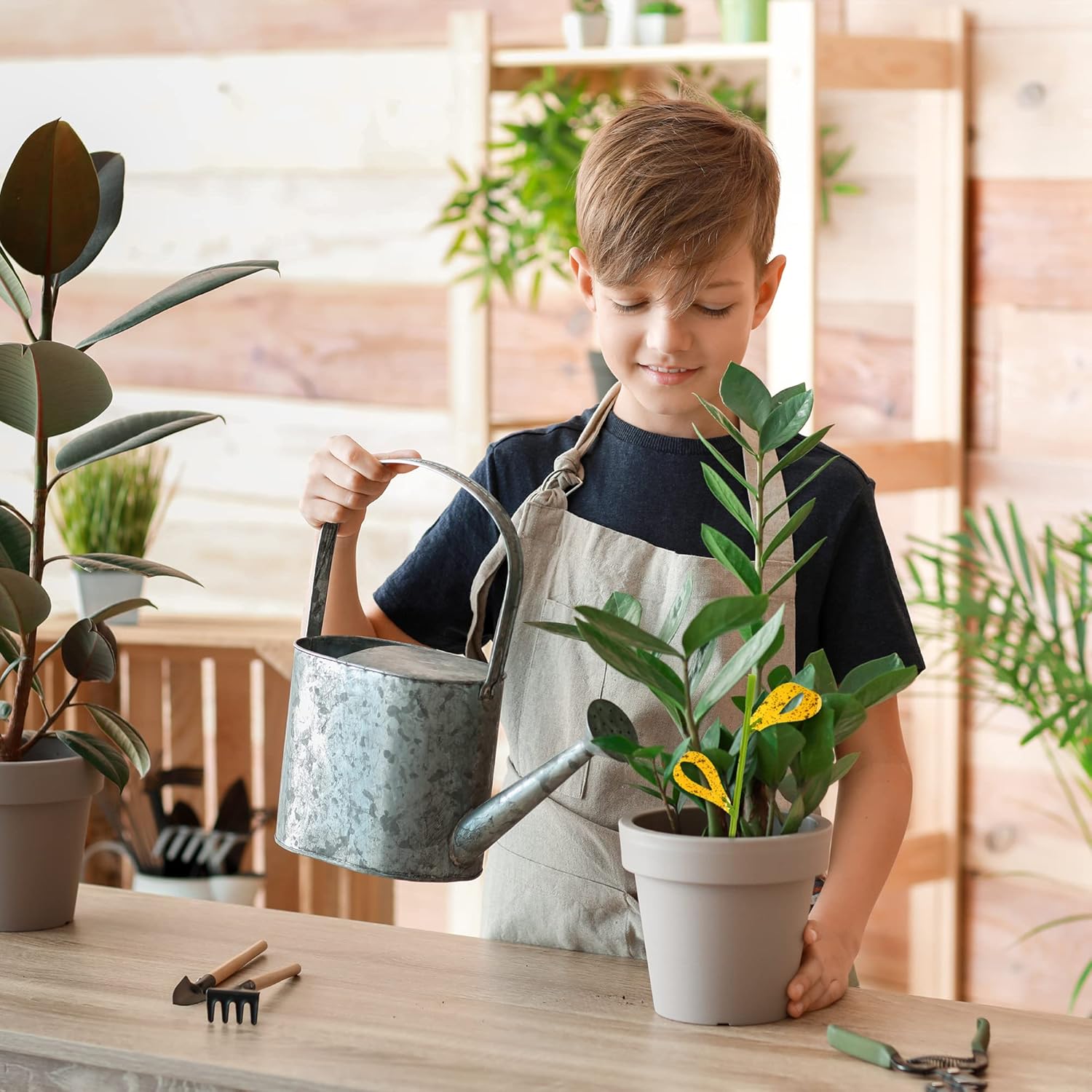
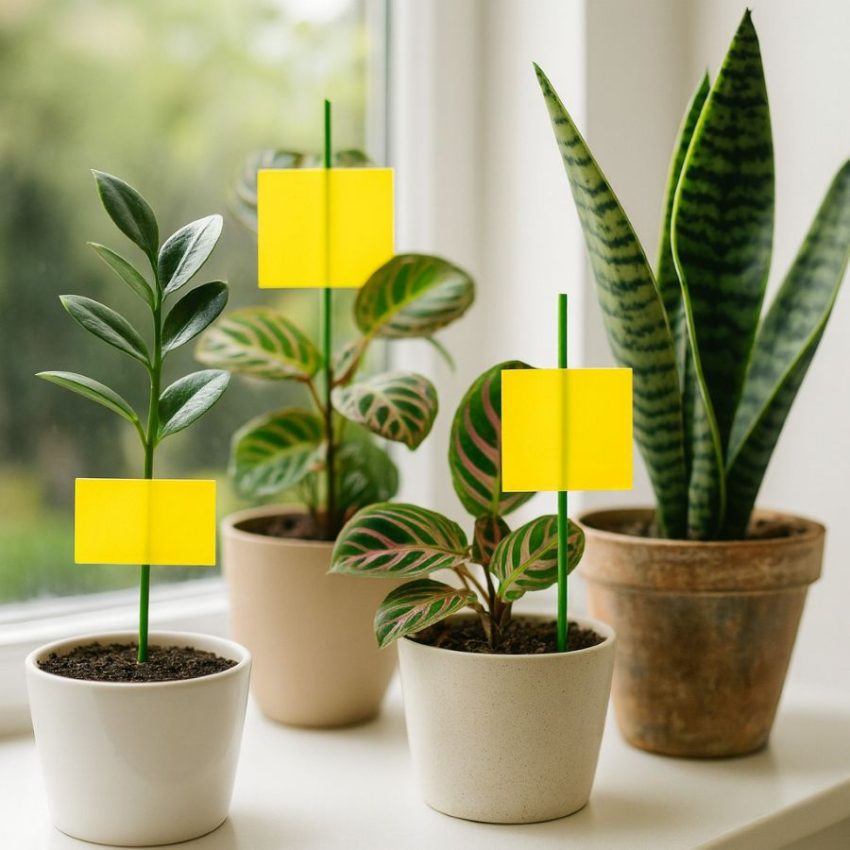
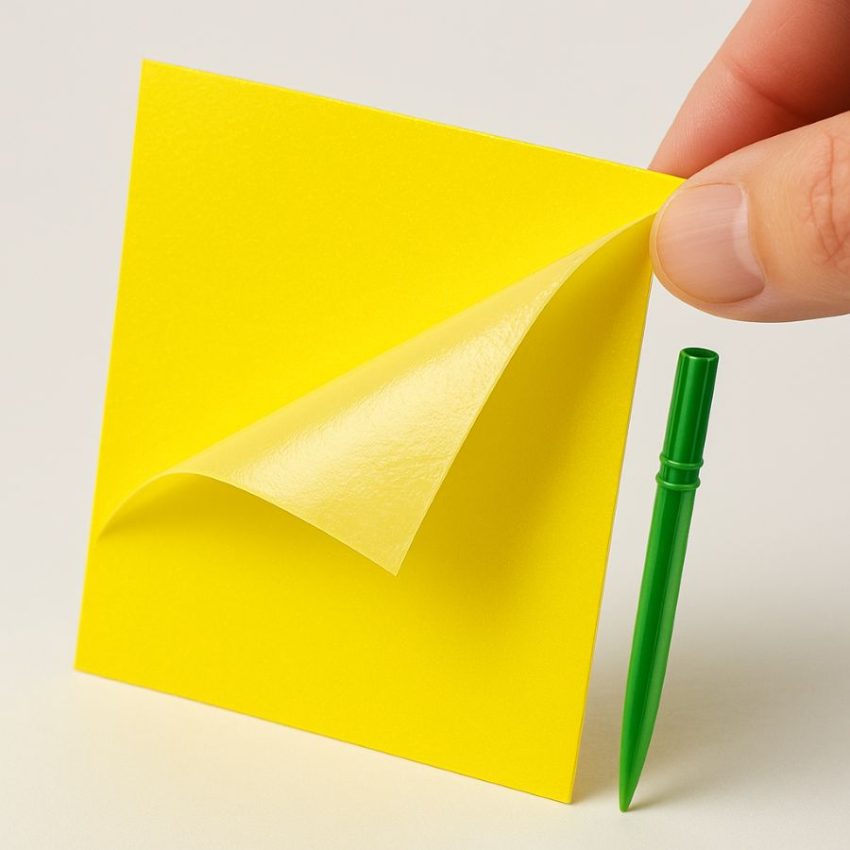
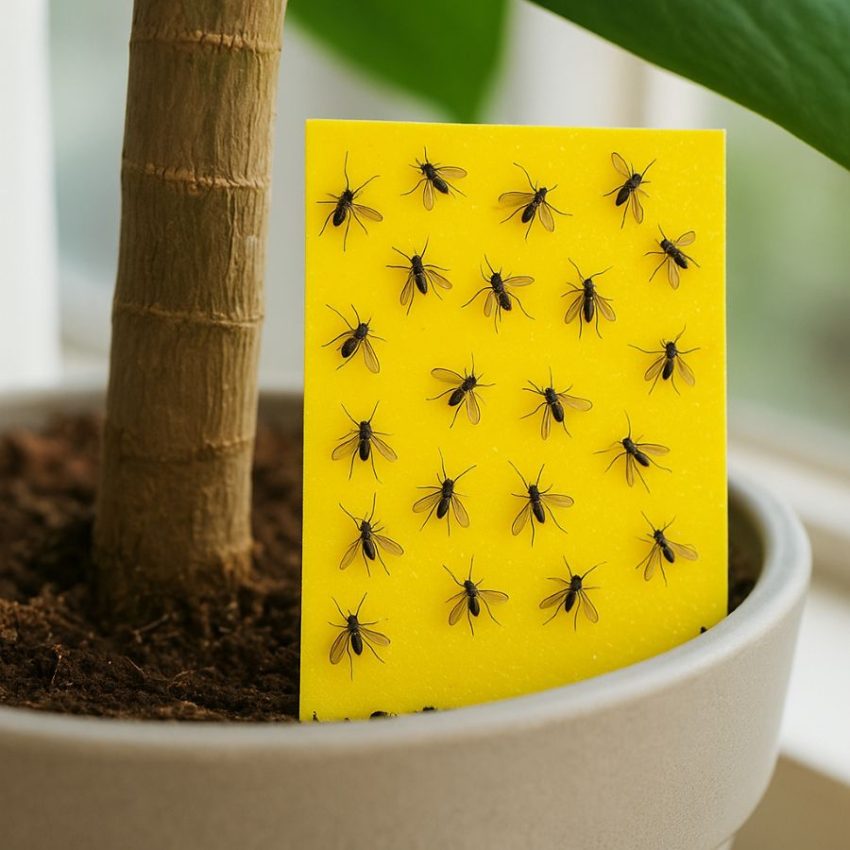
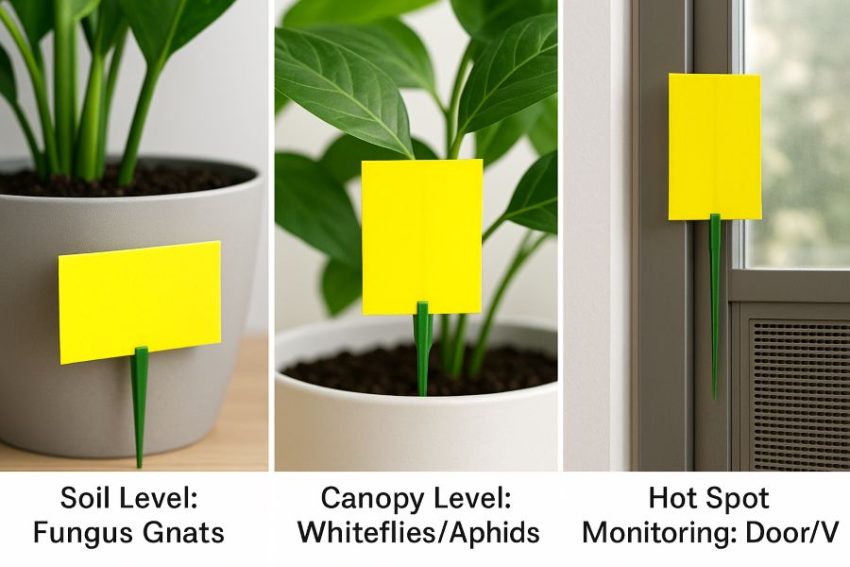
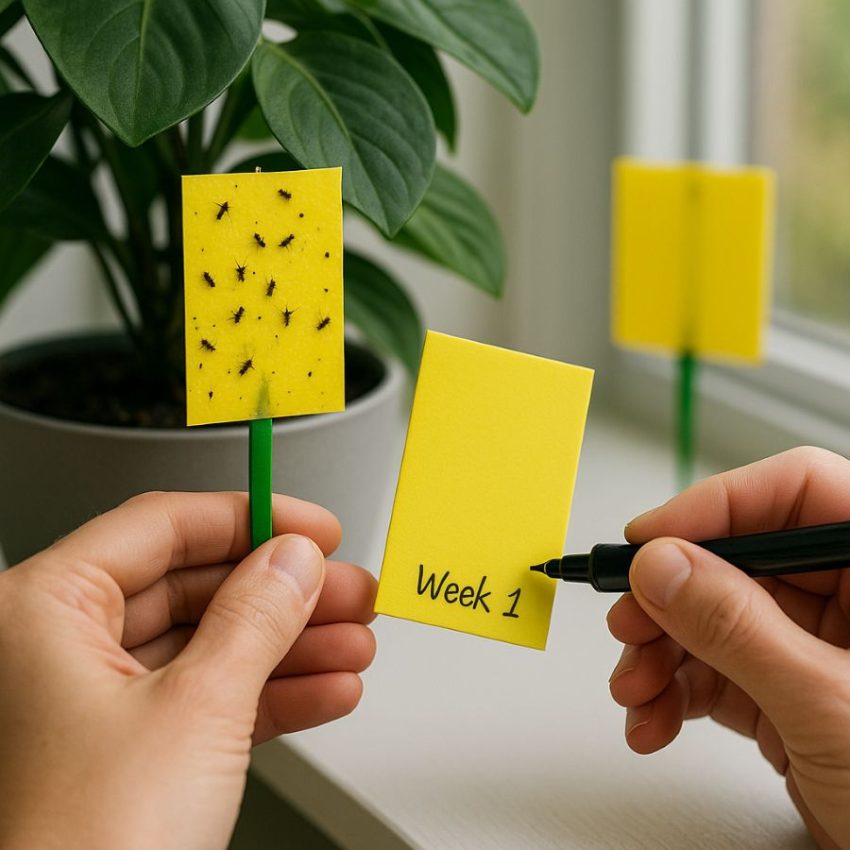
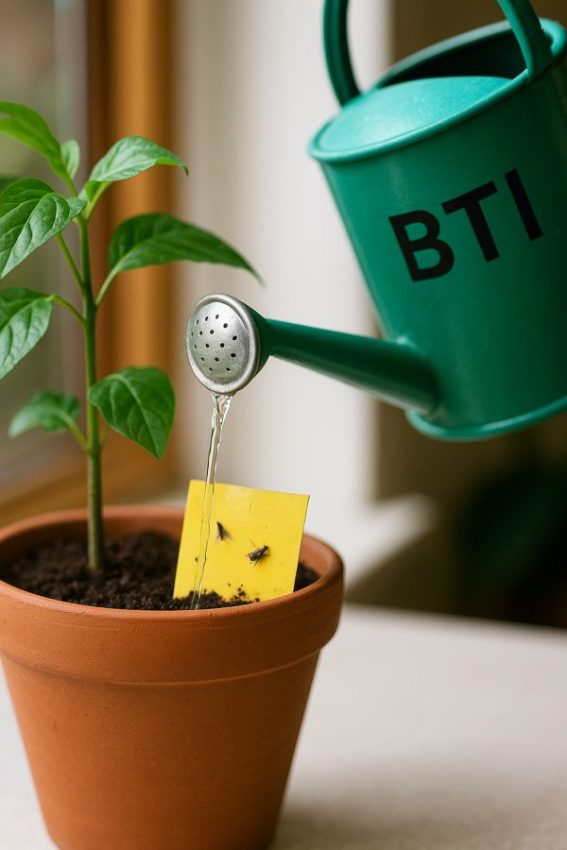
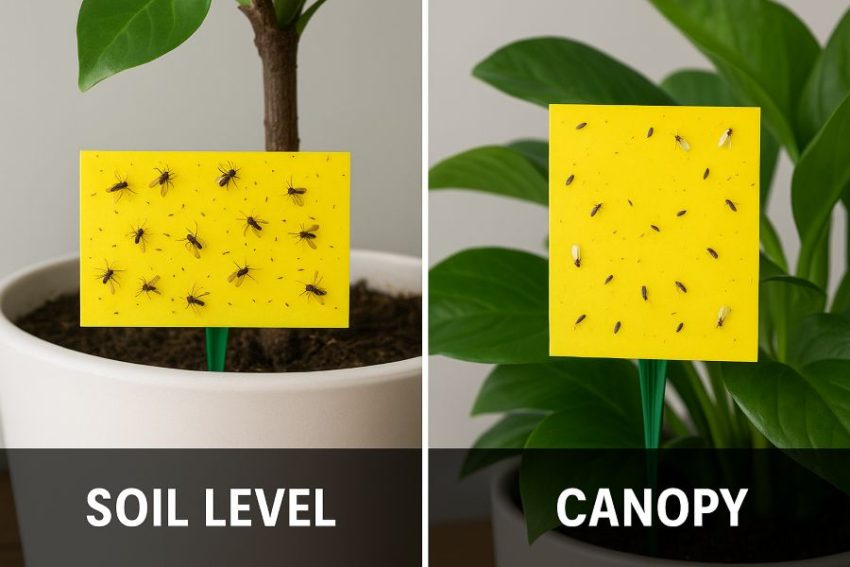


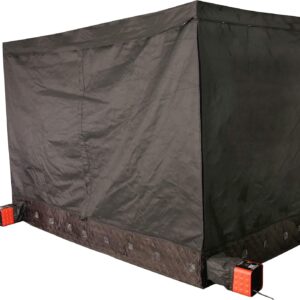

Reviews
There are no reviews yet.